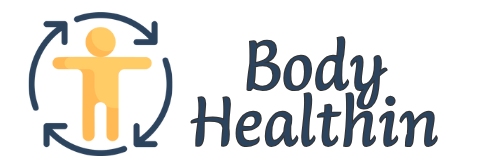Health Prevention 2.0: The Biohacker’s Blueprint for a 100-Year Healthspan

Introduction
We stand at the dawn of a healthcare revolution where living to 100 with vitality is becoming an achievable goal rather than a genetic lottery. Health Prevention 2.0 represents a seismic shift from reactive medicine to proactive health optimization, combining cutting-edge science with actionable lifestyle strategies.
This comprehensive guide explores how modern biohacking tools and longevity science can help you:
- Extend your healthspan (years of healthy living)
- Delay age-related diseases
- Optimize physical and cognitive performance
- Personalize your prevention strategy
The Pillars of Health Prevention 2.0
1. Genetic Intelligence: Your Personalized Health Roadmap
Modern genetic testing goes far beyond ancestry reports:
Advanced Testing Options:
- Whole genome sequencing (Nebula Genomics, Dante Labs)
- Epigenetic aging clocks (DNA methylation tests)
- Microbiome analysis (Viome, ZOE)
Practical Applications:
- Nutrigenomics: Tailoring your diet based on MTHFR, APOE, and other gene variants
- Exercise optimization: Understanding your ACTN3 (sprint/power) and ACE (endurance) genes
- Detox capacity: GST and CYP450 gene variants affecting toxin processing
*Case Study: A 45-year-old executive discovered through testing that he had impaired folate metabolism (MTHFR mutation). By switching to methylfolate supplementation, he reduced homocysteine levels by 35% in 3 months.*
2. Continuous Health Monitoring: Prevention in Real-Time
The quantified self movement has evolved into sophisticated health tracking:
Wearable Technologies:
| Device | Metrics Tracked | Key Benefit |
|---|---|---|
| Oura Ring | Sleep quality, HRV, body temp | Early illness detection |
| Levels CGM | Continuous glucose monitoring | Metabolic optimization |
| Whoop | Strain, recovery | Overtraining prevention |
| Apollo Neuro | HRV modulation | Stress resilience |
Emerging Technologies:
- Smart toilets analyzing waste for biomarkers (Stanford research)
- AI-powered ultrasound devices for organ monitoring (Butterfly Network)
- At-home blood testing (Finger-prick microsampling)

3. Longevity Therapeutics: The Cutting Edge
The longevity biotechnology sector is booming with promising interventions:
Evidence-Based Interventions:
- Rapamycin: mTOR inhibitor showing anti-aging effects in mammals
- Metformin: Diabetes drug with potential lifespan extension benefits
- Senolytics: Dasatinib+quercetin combination clearing senescent cells
Experimental Approaches:
- Young blood plasma transfusions (Ambrosia, although controversial)
- NAD+ boosters (NR, NMN supplements)
- Stem cell therapies for tissue regeneration
Important Note: Many interventions remain off-label and should only be pursued under medical supervision.
4. Metabolic Flexibility: The Foundation of Prevention
Optimizing cellular energy production is crucial for longevity:
Key Strategies:
- Time-restricted eating (14-16 hour daily fasts)
- Cyclical ketosis for metabolic reset
- Cold exposure (upregulating mitochondria)
- Phytochemical cycling (varying plant compounds)
Supportive Supplements:
- Berberine (AMPK activator)
- Resveratrol (sirtuin activator)
- Sulforaphane (Nrf2 pathway)
Implementation Framework: Your Prevention 2.0 Plan
Step 1: Baseline Assessment
- Comprehensive blood work (including hormones, inflammation markers)
- Body composition analysis (DEXA scan)
- Cognitive function testing
Step 2: Intervention Stack
- Daily Foundations:
- Sleep optimization (temperature, light, timing)
- Movement snacks (5min every hour)
- Stress modulation (breathing exercises)
- Weekly Enhancements:
- Sauna sessions (4x30min at 80°C)
- Zone 2 cardio (3x45min weekly)
- Resistance training (2-3x weekly)
- Quarterly Checkpoints:
- Biomarker retesting
- Protocol adjustments
- New research integration
Conclusion: The Longevity Mindset
Health Prevention 2.0 isn’t about chasing immortality—it’s about compressing morbidity and maximizing the quality of every year. As longevity scientist Dr. Peter Attia notes: “The goal isn’t to live longer, but to live younger longer.”
The tools now exist to take control of your health destiny. While the science continues to evolve, the most powerful interventions remain consistent sleep, intelligent nutrition, purposeful movement, and emotional resilience.
